
Delta's new RGB DDR5-7200 comes with the types of advances we expect from what is quickly becoming a mature technology. It takes time for new technologies to catch on. Intel was one step ahead of its rival AMD when it adopted DDR5 memory early on a mainstream platform. Intel had already embraced DDR5 since Alder Lake; therefore, Raptor Lake was the chipmaker's second generation of consumer chips to check in with DDR5 support. AMD, on the other hand, made the transition recently with its Zen 4 processors. With one generation under Intel's belt, it's comprehensible why Raptor Lake processors have a higher headroom for supporting ultra-fast DDR5 memory kits.
Memory vendors had made significant progress with DDR5. Thanks to Intel's Raptor Lake products, manufacturers could push the DDR5 speed limit. As a result, nowadays, memory kits that span between DDR5-7000 and DDR5-8000 have arrived on the retail market. The Delta RGB DDR5 memory portfolio from TeamGroup offers varying data rates, but this review will evaluate the company's Delta RGB DDR5-7200 C34 memory kit and see whether it's for you.
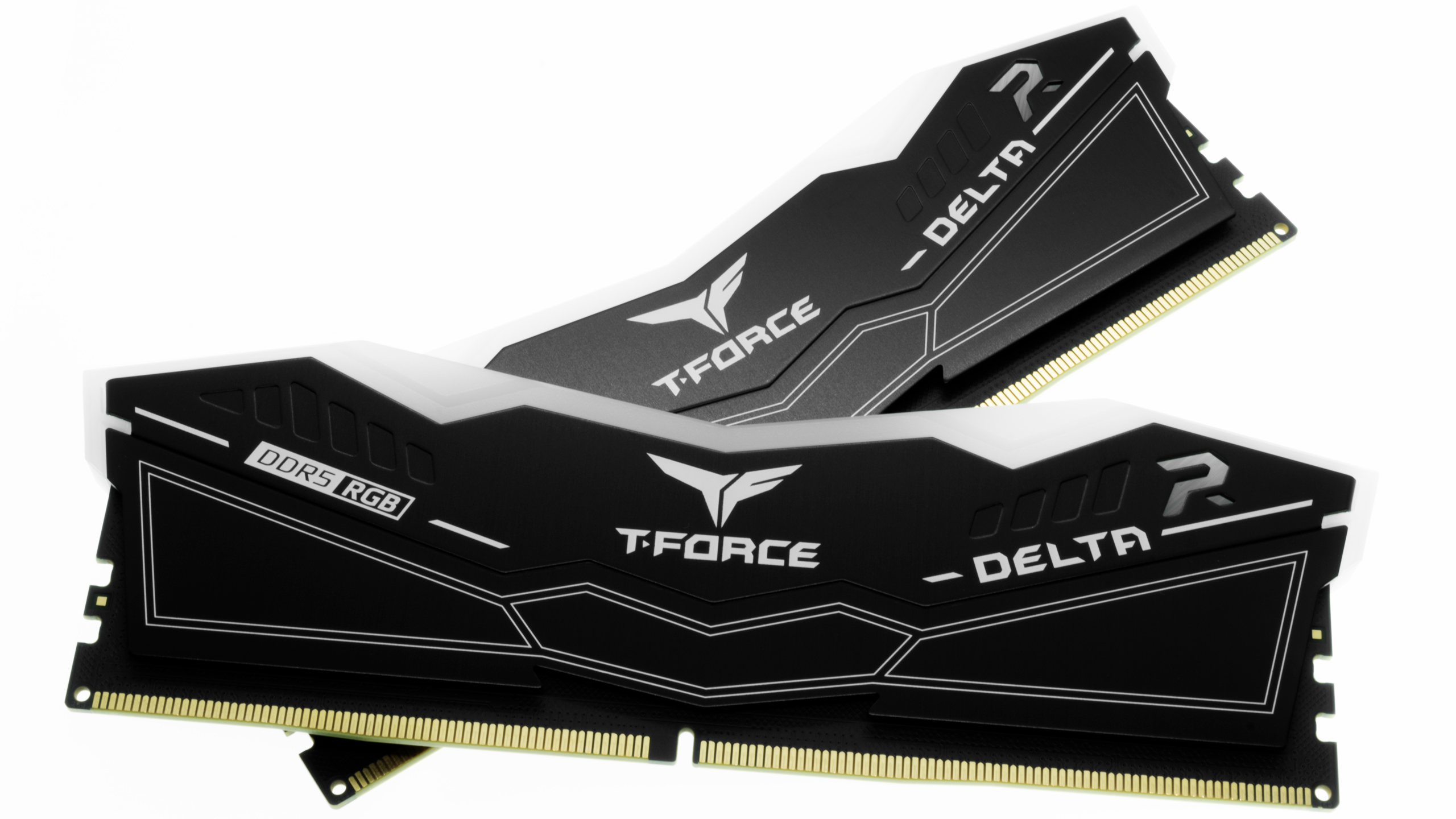
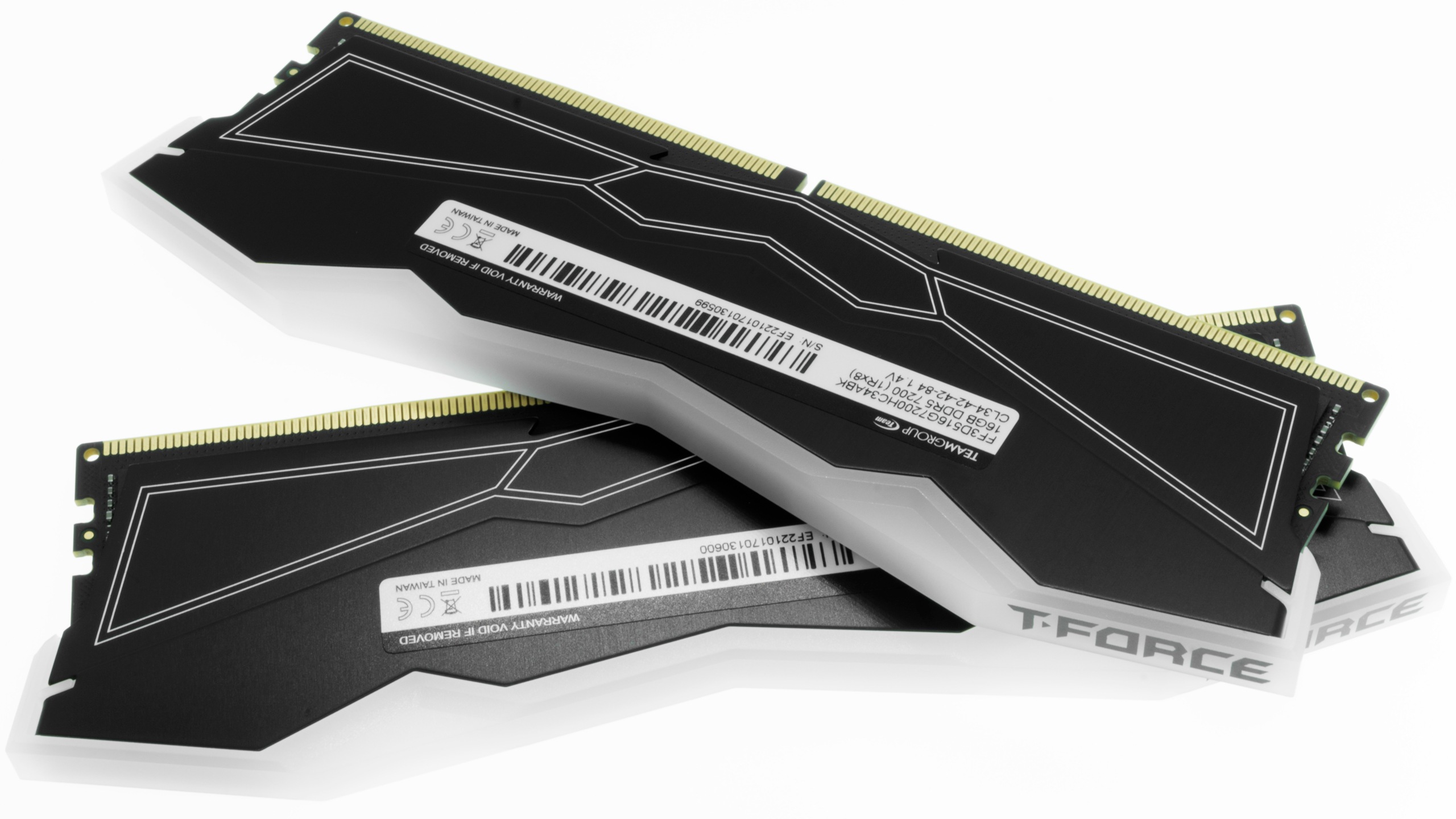

The memory modules have an aluminum heat spreader that rocks a sharp design and dynamic RGB lighting. TeamGroup offers the Delta RGB DDR5 memory in white and black colors. Unlike the Delta RGB DDR5-6000 C40 we previously reviewed, the memory modules from this memory kit lack the matte finish, making the heat spreader more reflective to light. Other than this small detail, everything else looks the same.
There's no cause for concern about memory compatibility with CPU air coolers. The Delta RGB DDR5 has a height of 46.1mm (1.81 inches), and we don't expect it to get in the way of modern CPU coolers. Unfortunately, TeamGroup doesn't ship any software with the memory kit, so you'll have to find refuge in your motherboard's software. The vast compatibility list includes Asus Aura Sync, Gigabyte RGB Fusion 2.0, MSI Mystic Light Sync, ASRock Polychrome Sync, and Biostar Advanced Vivid LED DJ.

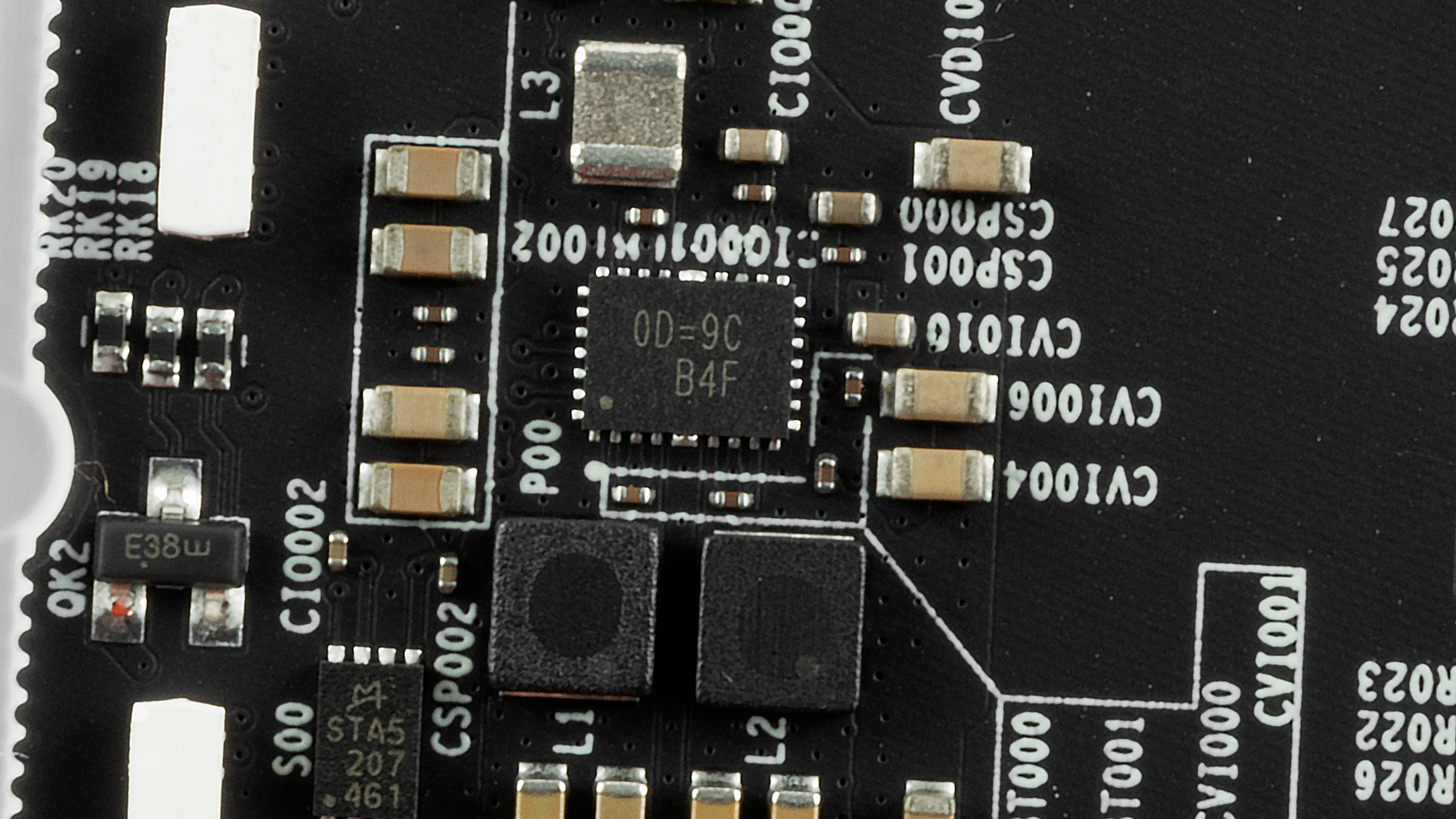
TeamGroup only sells its DDR5-6800 and above memory kits in the 32GB (2x16GB) flavor, which is the predominant capacity for DDR5. Given the density, each memory module uses the conventional single-rank design. Like its rivals, the high-speed memory kit sports SK hynix's latest H5CG48AGBDX018 (A-die) integrated circuits (ICs). The power management IC (PMIC) has 0D=9C B4F model name printed on it, so it's from Richtek.
Unlike other DDR5 memory kits that default to DDR5-4800, the Delta RGB DDR5-7200 C34 runs at DDR5-5600 right out of the box. At DDR5-5600, the memory operates with 46-46-46-90 timings. Activating the XMP 3.0 profile will force it to hit DDR5-7200 at 1.4V with timings designed to run at 34-42-42-84. See our PC Memory 101 feature and How to Shop for RAM story for more timings and frequency considerations.
Comparison Hardware


Our Intel test system revolves around Intel's Core i9-13900K processor and MSI's MEG Z690 Unify-X motherboard, running the 7D28vA8 firmware. In contrast, the AMD testbed leverages the Ryzen 7 7700X and ASRock X670E Taichi currently on the 1.11.AS06 firmware.
Corsair's CUE H100i Elite LCD liquid cooler keeps the Raptor Lake and Zen 4 processor temperatures in line. In addition, the MSI GeForce RTX 2080 Ti Gaming Trio tackles our gaming RAM benchmarks.
Our Windows 11 installation, benchmarking software, and games reside on Crucial's MX500 SSDs, whereas the Corsair RM650x power supply feeds our system with the necessary power. Lastly, the Streacom BC1 open bench table ensures that our hardware is well-kept and tidy.
Intel Performance
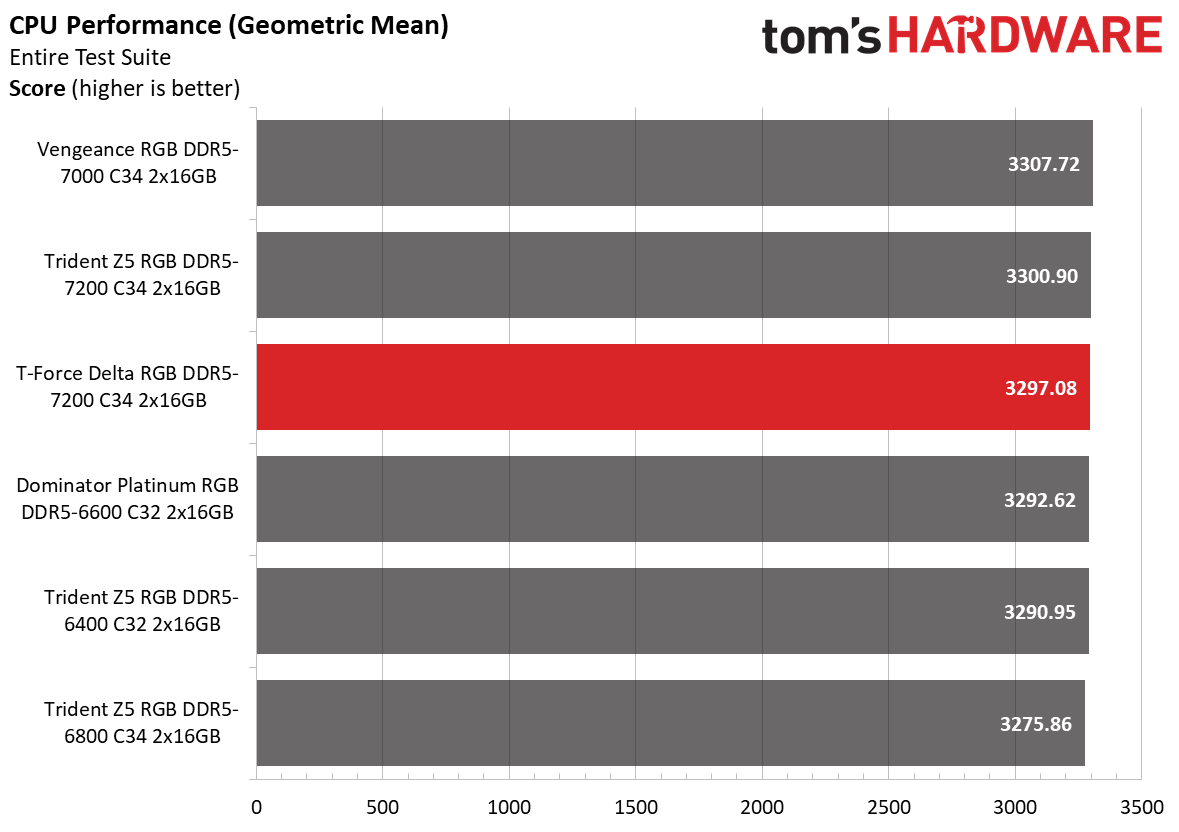
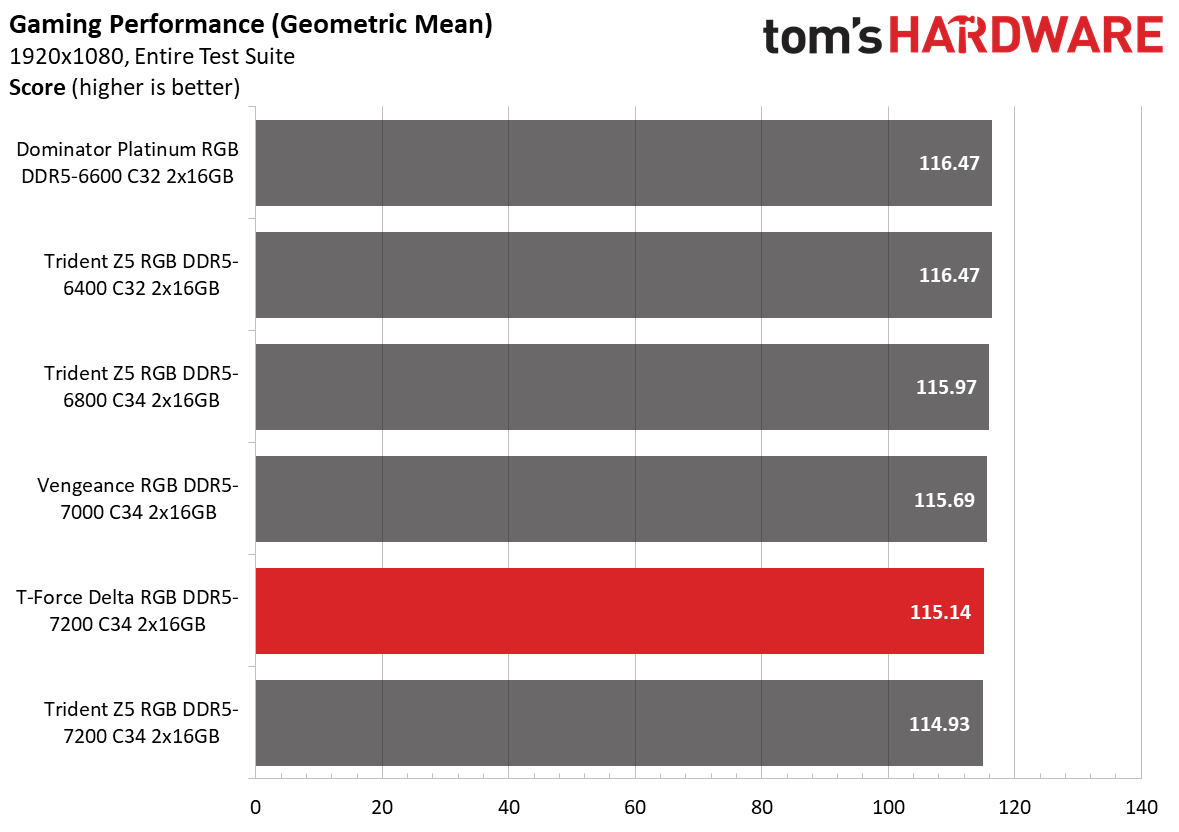
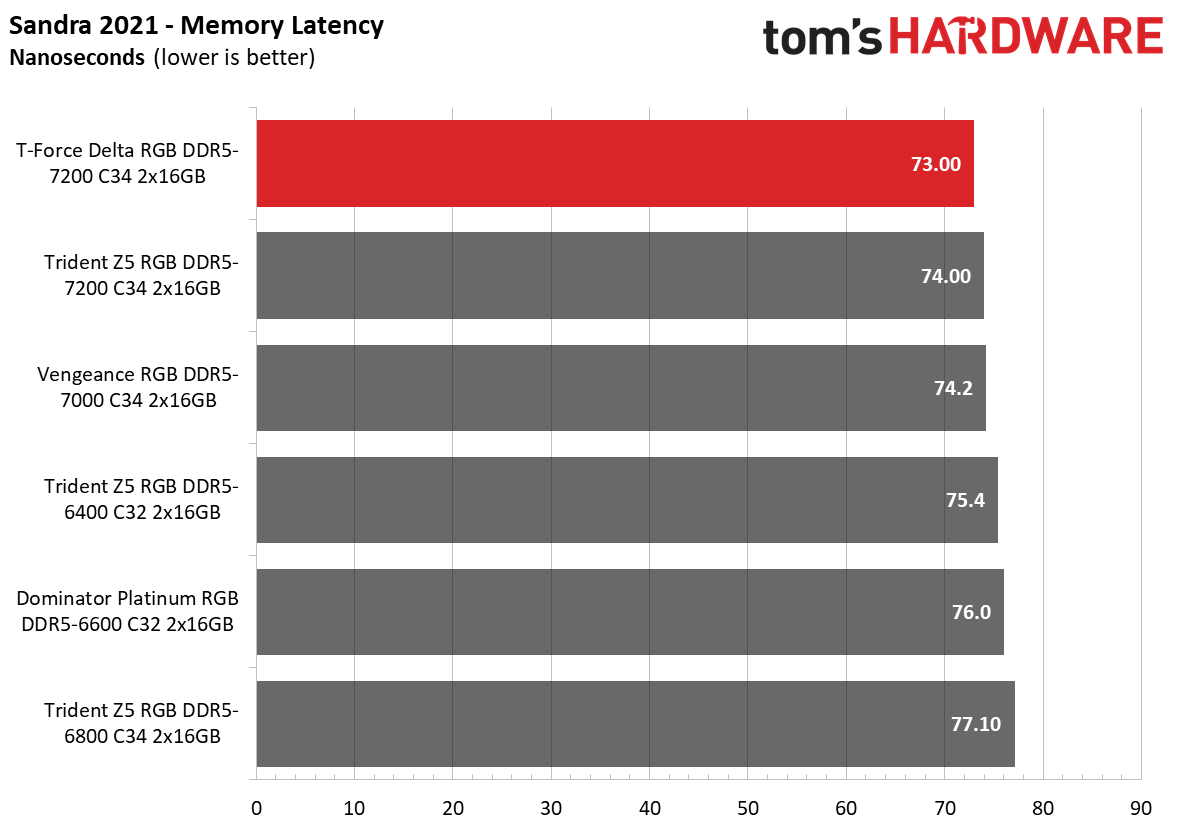
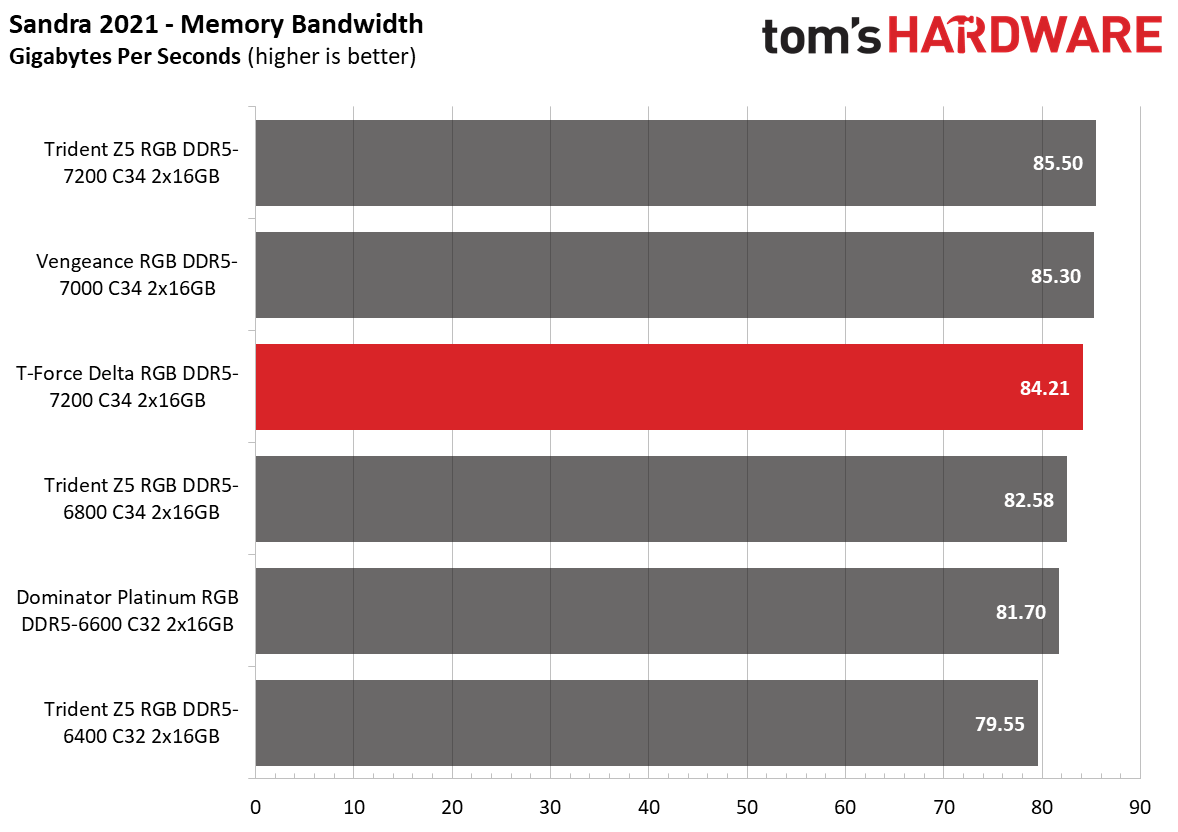
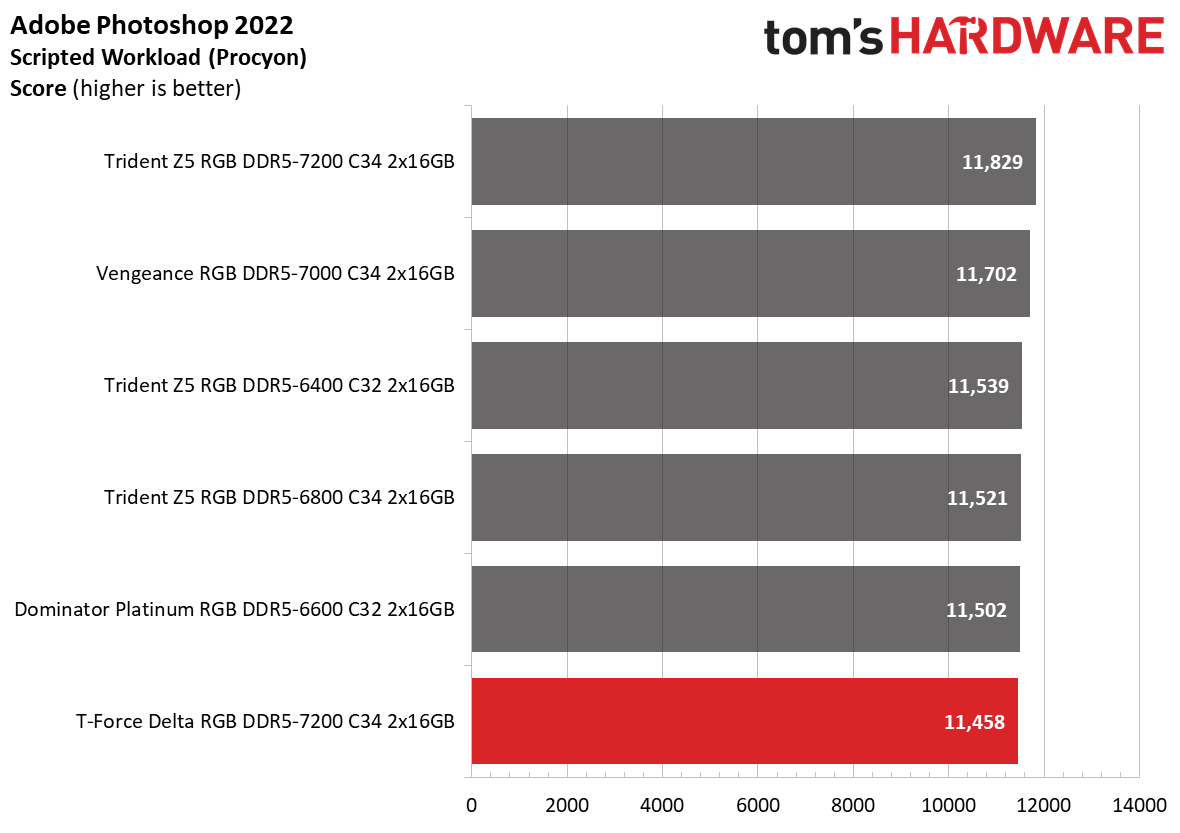
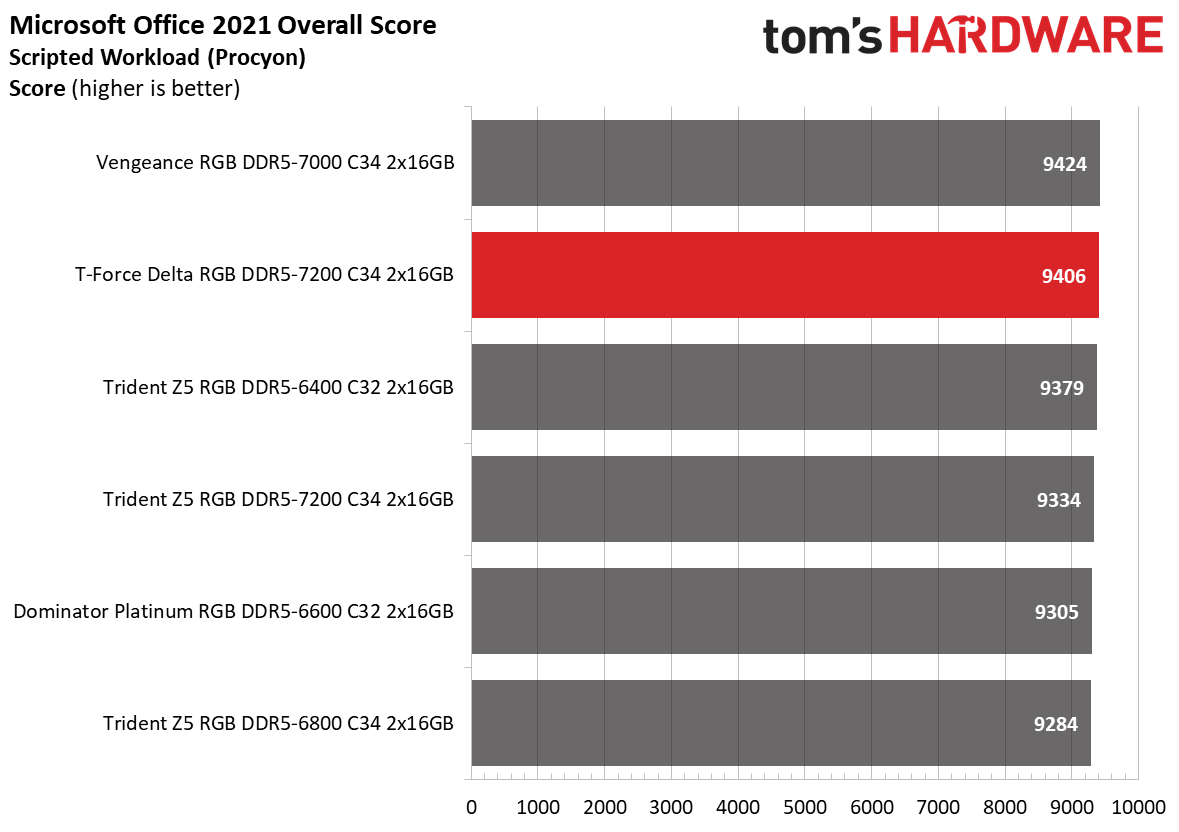
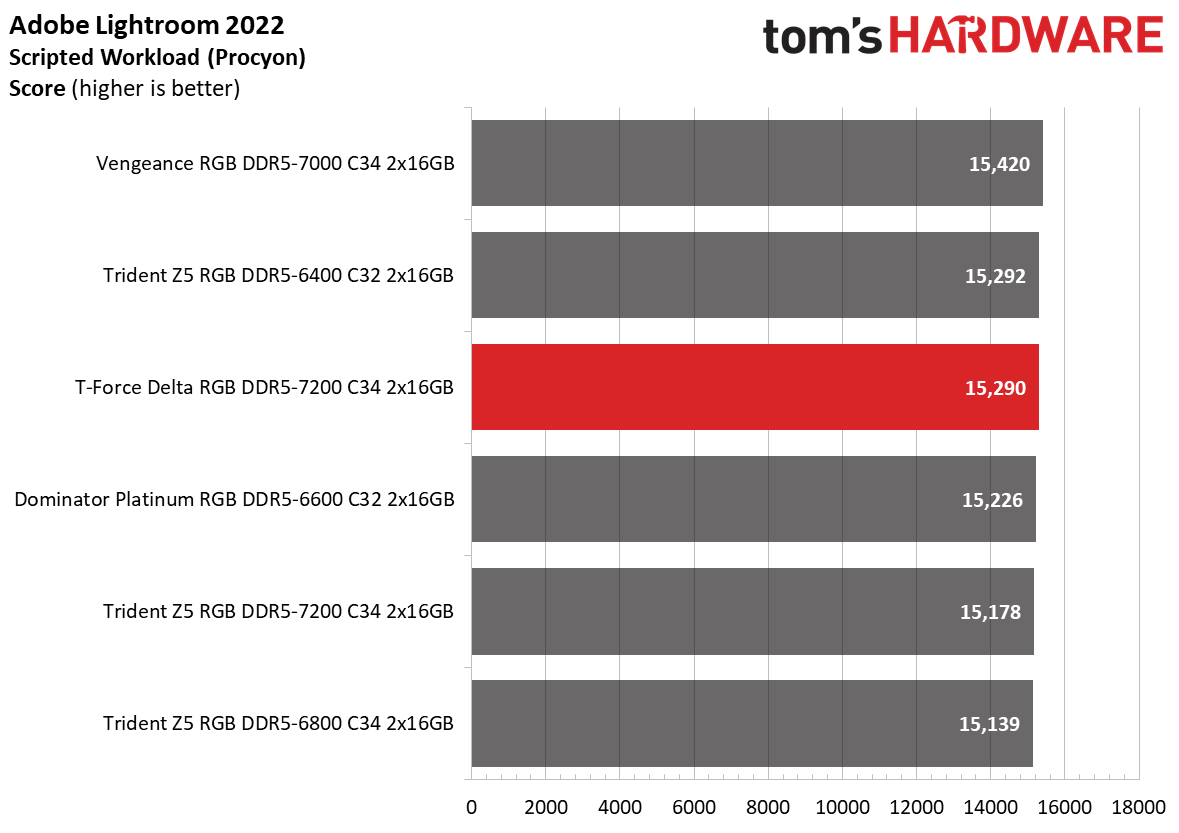




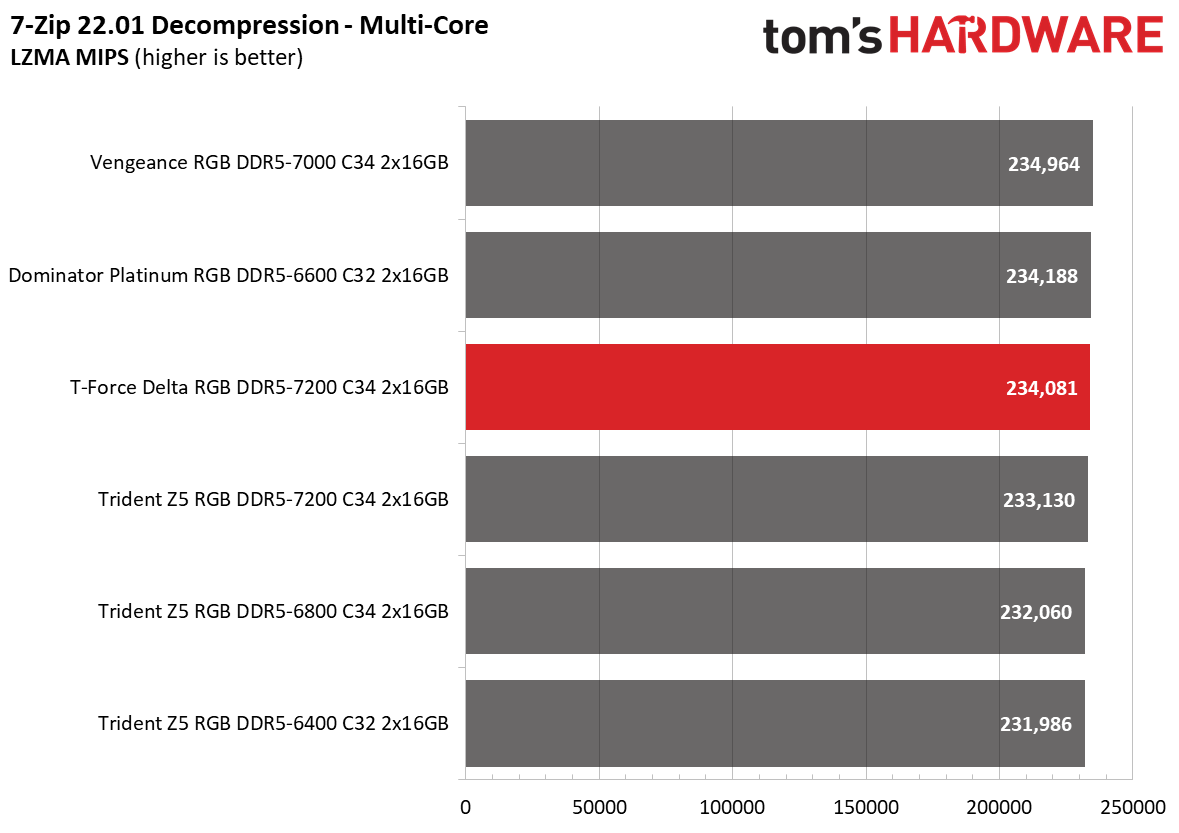

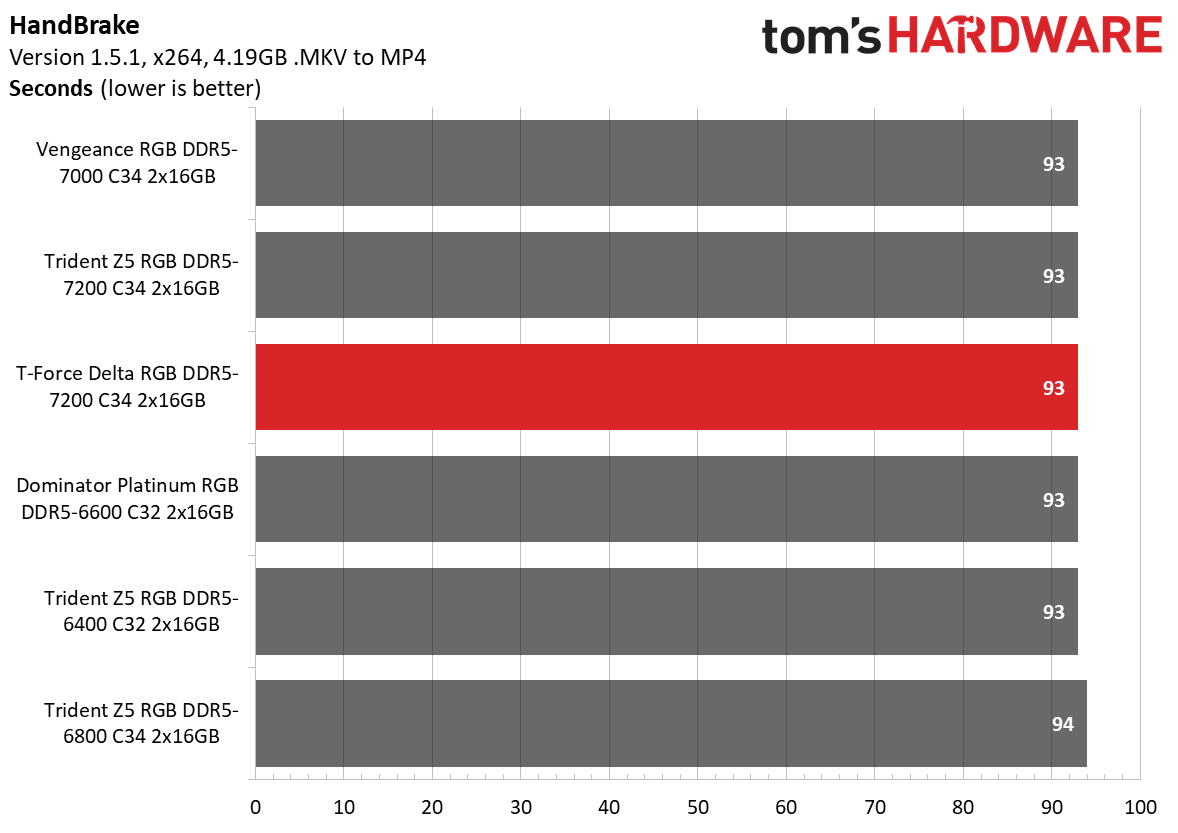
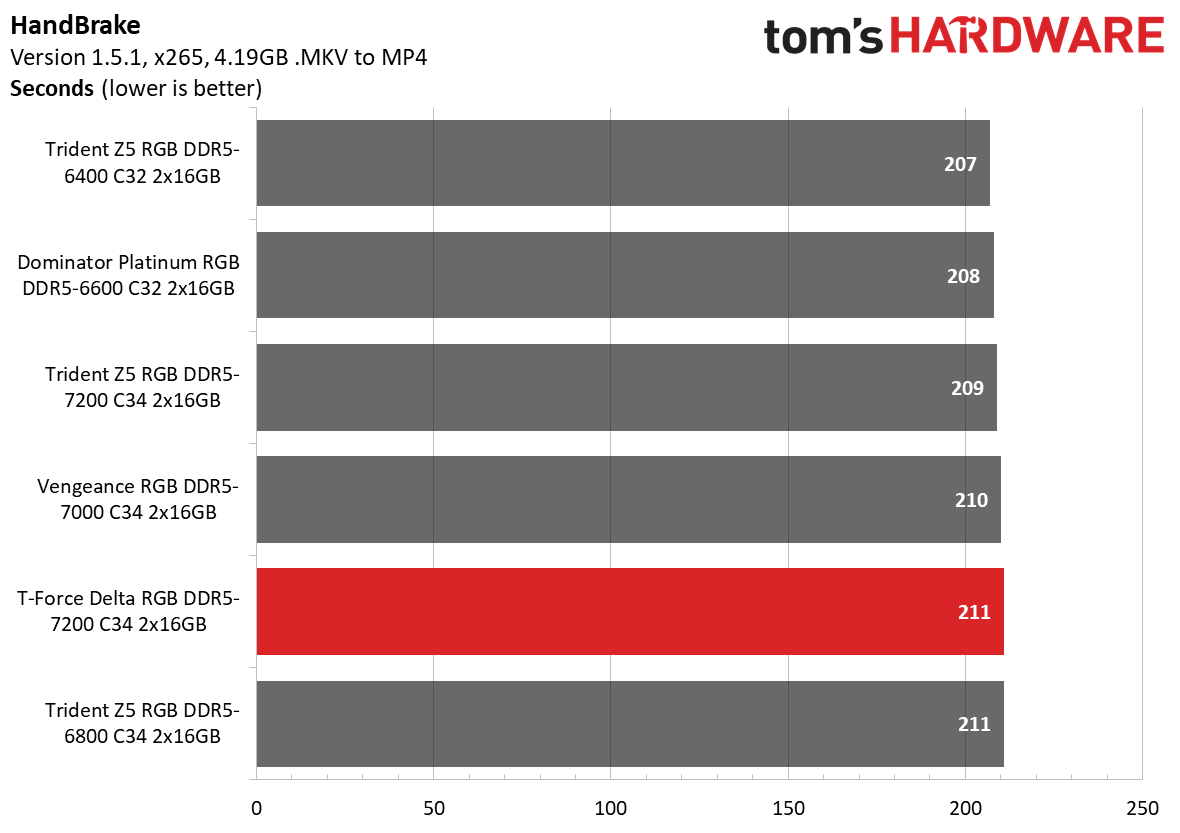
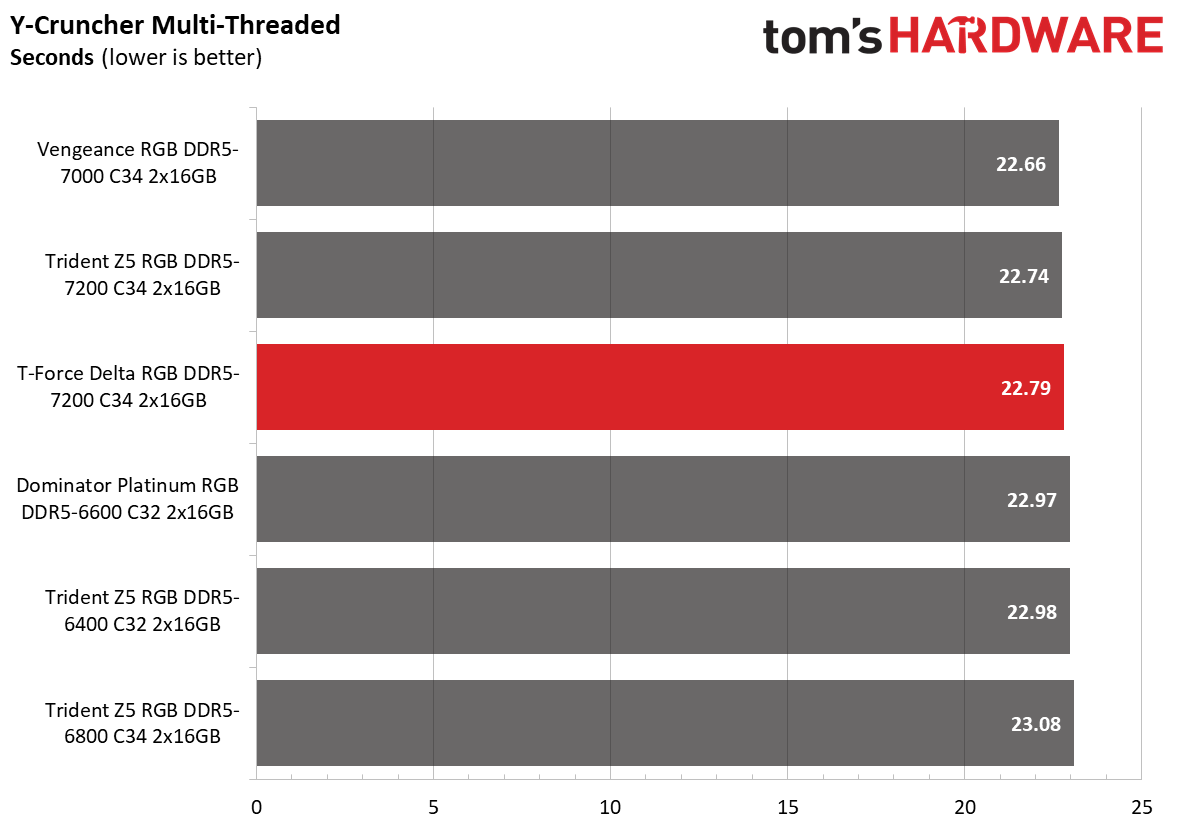
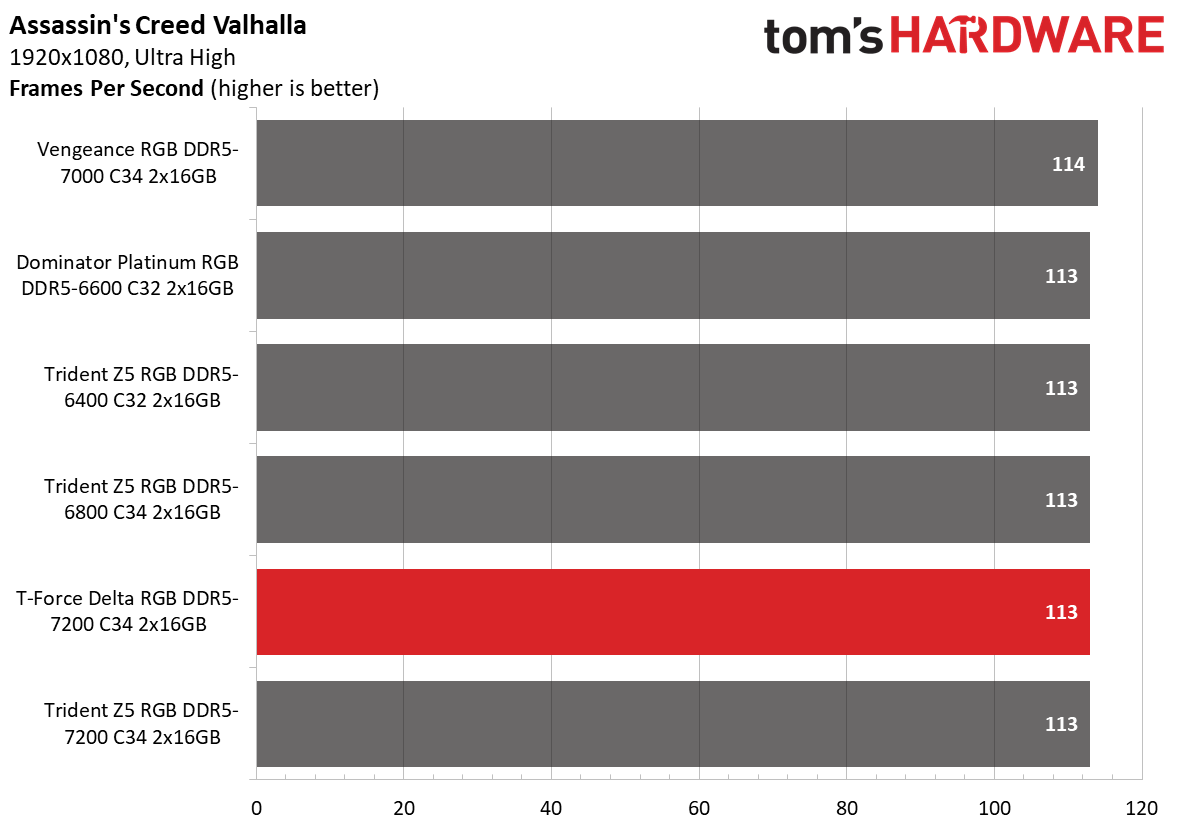
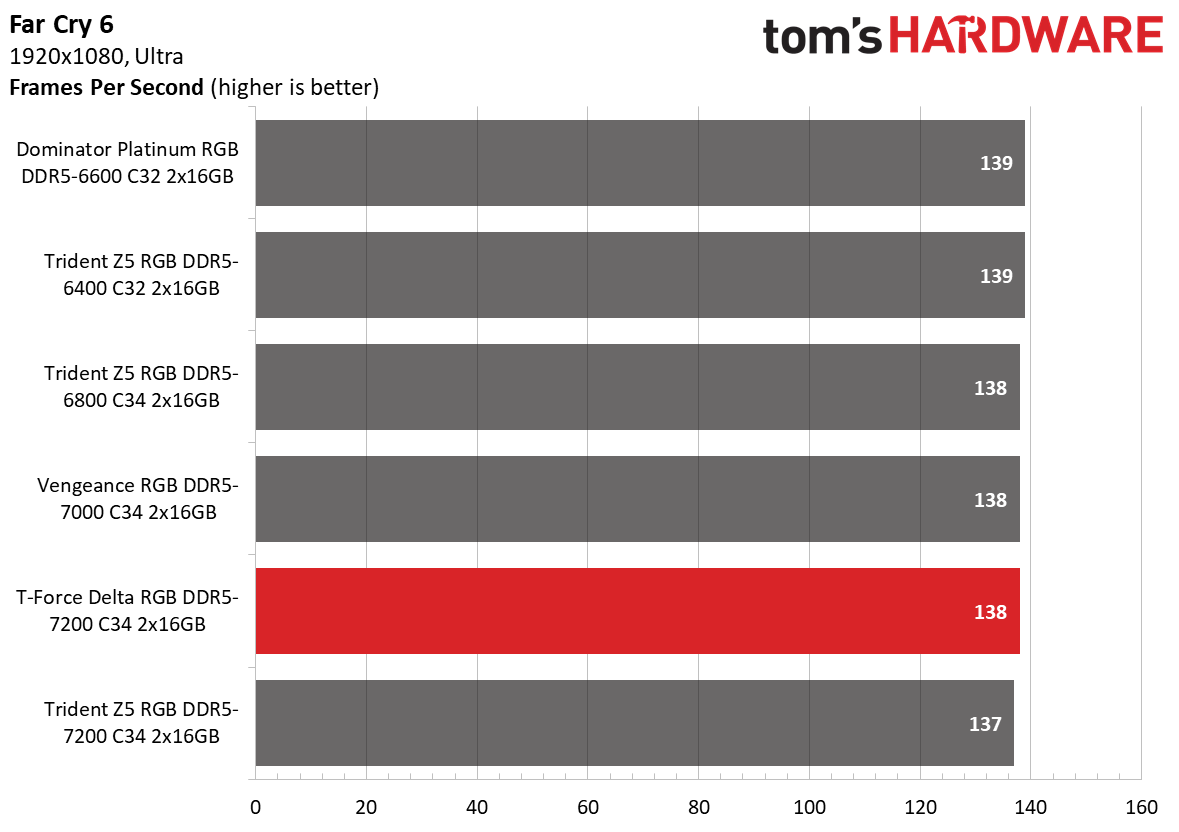
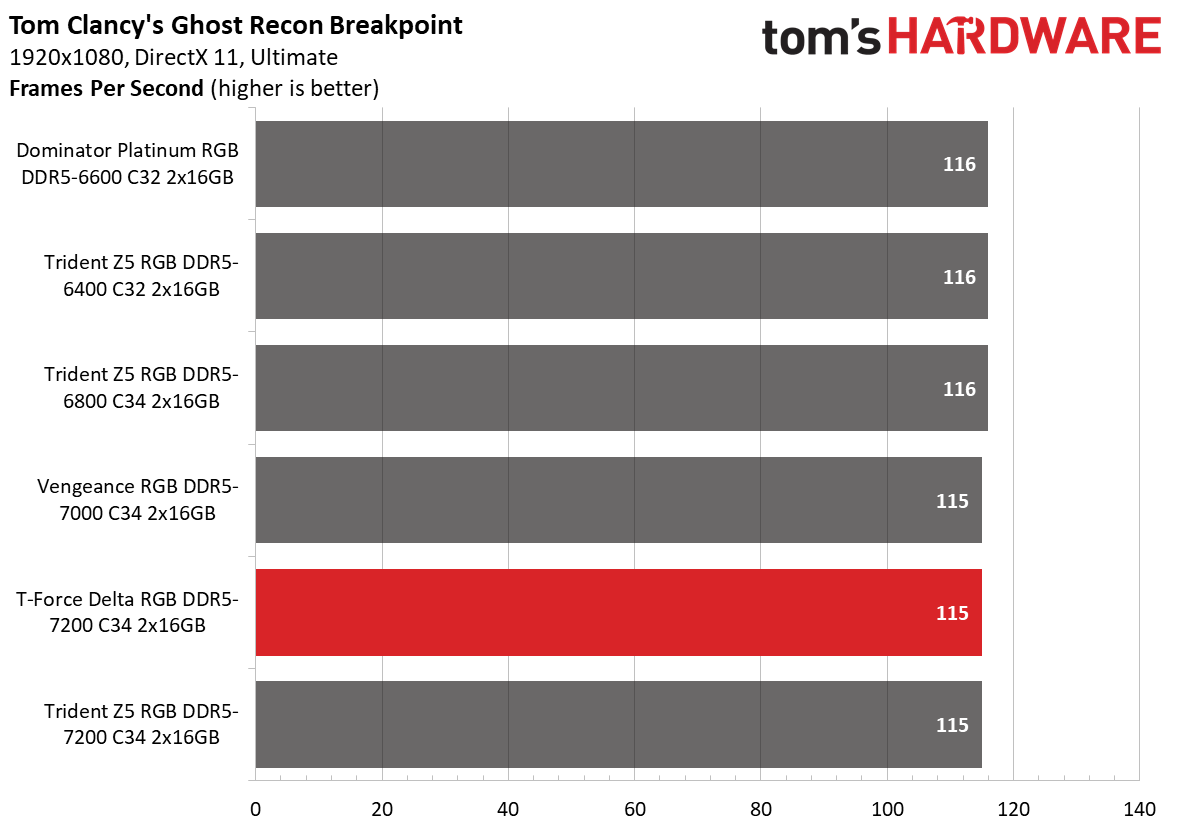
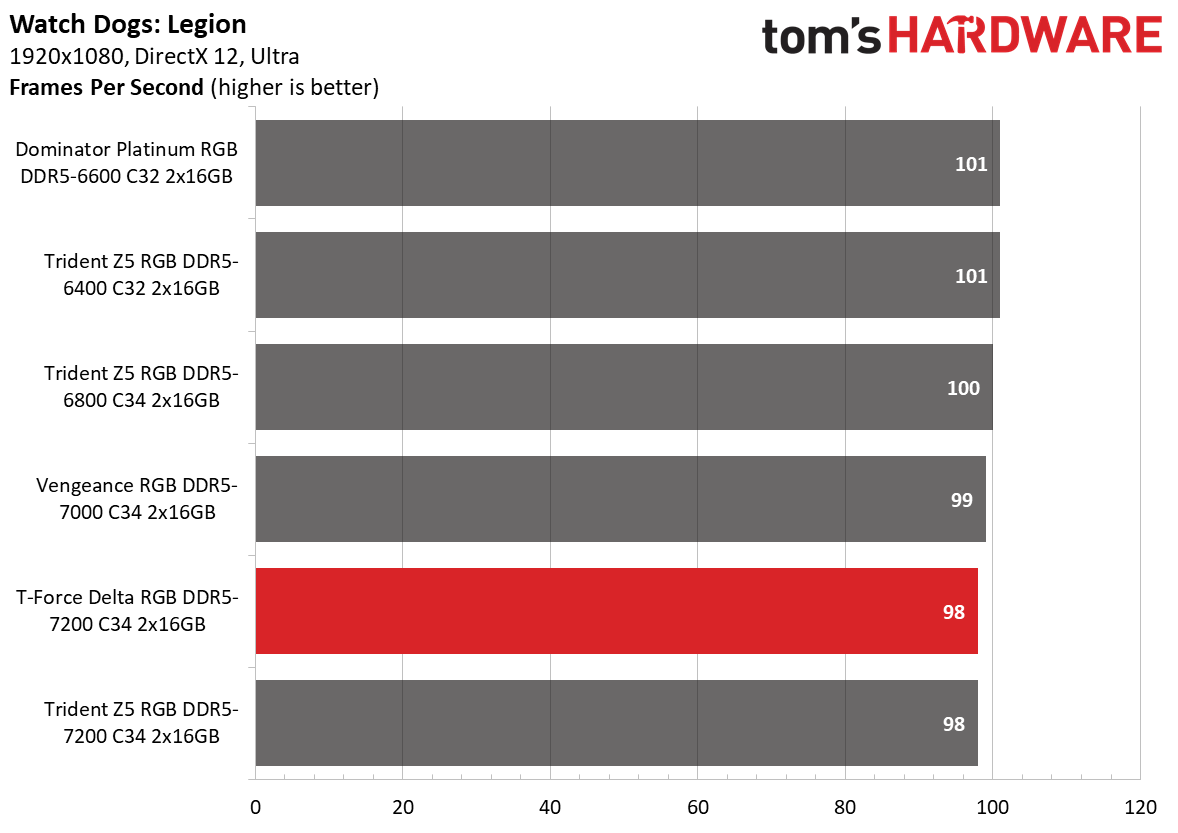
As expected, TeamGroup's memory kit didn't have any trouble outperforming the Dominator Platinum RGB DDR5-6600 C32, the fastest DDR5 memory kit we had previously tested. The Delta RGB DDR5 exhibited the lowest memory latency (73ns) of the lot. In addition, it showed its best in the 7-Zip compression benchmark, outpacing the slowest performer by a 4.2% margin.
AMD Performance
The current state of the AGESA code and silicon limitations put AMD's Ryzen 7000 processors at a disadvantage regarding memory support. However, the good samples with a powerful IMC (integrated memory controller) typically support DDR5-6400 to DDR5-6600 memory.
For our particular Ryzen 7 7700X, DDR5-6400 is the ceiling, so DDR5-7200 is beyond the bounds of possibility.
Overclocking and Latency Tuning
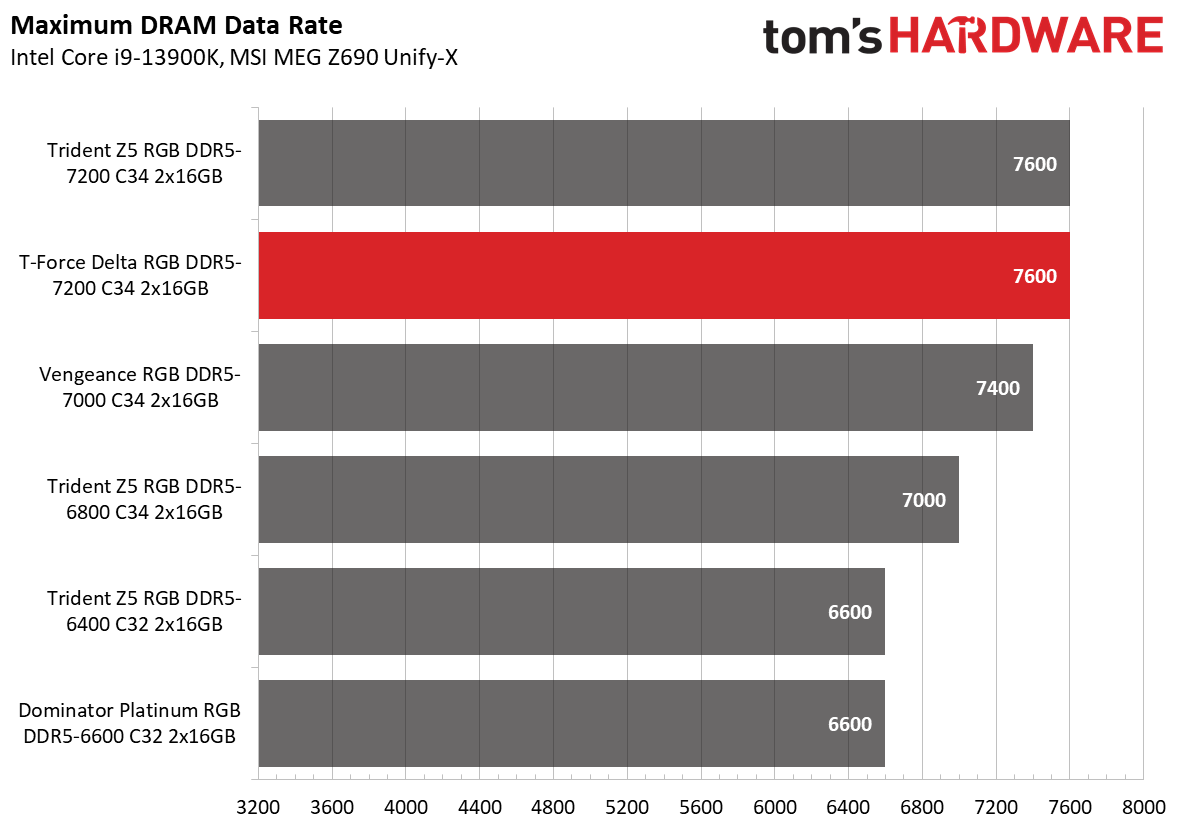
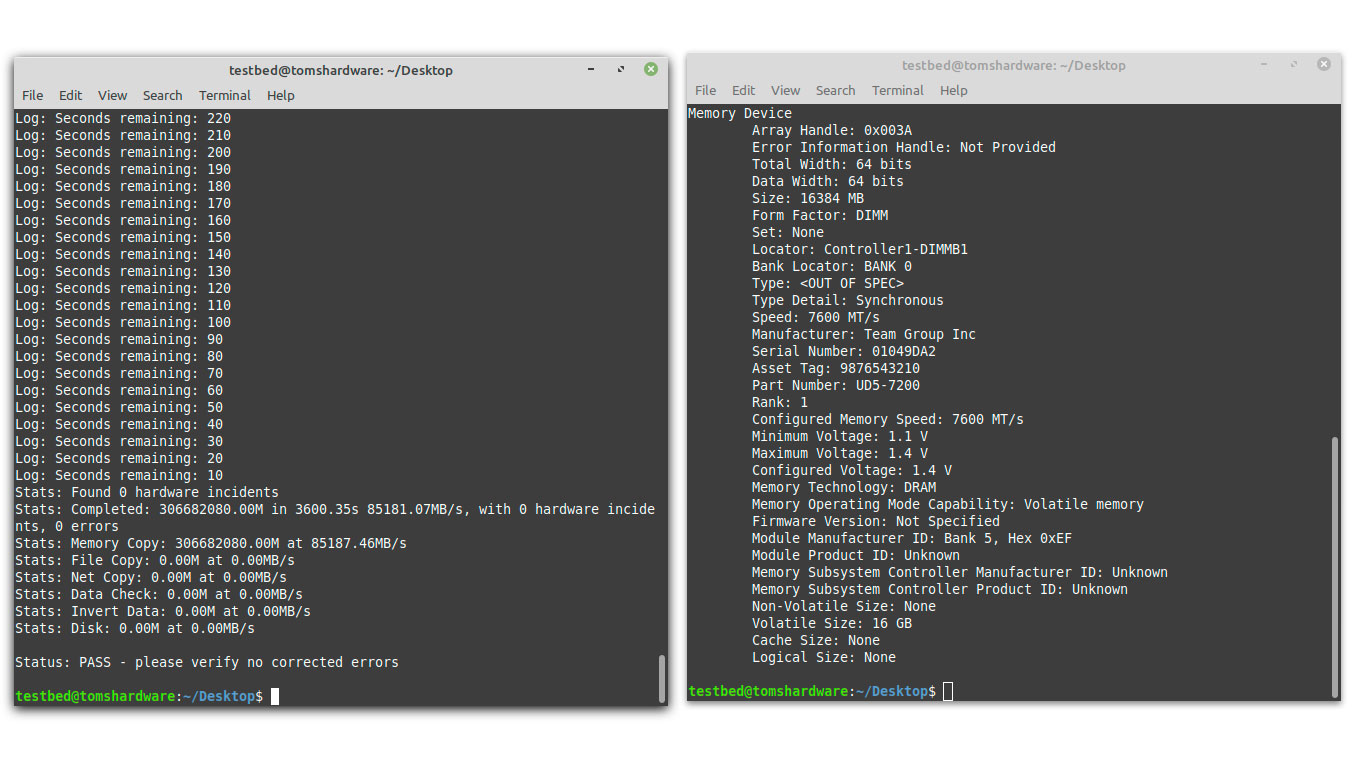

SK hynix's previous M-die ICs were the best overclockers, and the trend continues with the new A-die chips. We raised the DRAM voltage from 1.4V to 1.45V to overclock TeamGroup's memory to DDR5-7600. We had to relax the memory timings from 34-42-42-84 to 36-46-46-86, the typical configuration for a DDR5-7600 memory kit.
Lowest Stable Timings
One of the strengths of A-die ICs is that they can scale high with a bit of voltage. On the downside, they dislike tight timings, unlike Samsung B-die. So despite our efforts and the extra 0.05V in DRAM voltage, the end result was 34-41-41-81.
Bottom Line
TeamGroup tailored the Delta RGB DDR5-7200 C34 towards Intel's 13th Generation Raptor Lake processors and 700-series platform, so that's the best match for this memory kit. AMD's Zen 4 offerings are out of the question if you want to extract the top speeds, but you could get away with an Alder Lake chip if your IMC is good. If the Delta RGB DDR5-7200 C34 isn't fast enough for you, rest assured that the SK hynix A-die ICs, which the memory kit utilizes, offer ample headroom for overclocking.
The official MSRP for the Delta RGB DDR5-7200 C34 is $274.99; however, you can generally find it with a reduced price tag. For example, Newegg sells the black and white variants for $236.99, and sometimes you can bring the price lower through promos. It's definitely not cheap, but high performance never is, especially since DDR5 is still pretty much premium hardware.







